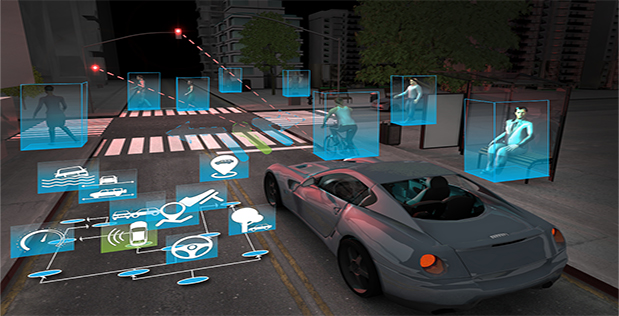The Defense Advanced Research Projects Agency (DARPA) is an agency of the U.S. Department of Defense responsible for the development of emerging technologies for use by the military.
DARPA was created in February 1958 as the Advanced Research Projects Agency (ARPA) by President Dwight D. Eisenhower. Its purpose was to formulate and execute research and development projects to expand the frontiers of technology and science, with the aim to reach beyond immediate military requirements.
DARPA is independent from other military research and development agencies and is considered as a thought leader for many of the inventions, like Computers, networking, GPS and many other…
Defense Advanced Research Projects Agency (DARPA) is instituting new Lifelong Learning Machines (L2M) program that seeks to develop the foundations for systems that might someday “learn” in much the way biological organisms do.
Self-driving taxis. Cell phones that react appropriately to spoken requests. Computers that outcompete world-class chess and Go players. Artificial Intelligence (AI) is becoming part and parcel of the technological landscape—not only in the civilian and commercial worlds but also within the Defense Department, where AI is finding application in such arenas as cybersecurity and dynamic logistics planning.
But even the smartest of the current crop of AI systems can’t stack up against adaptive biological intelligence. These high-profile examples of AI all rely on clever programming and extensive training datasets—a framework referred to as Machine Learning (ML)—to accomplish seemingly intelligent tasks. Unless their programming or training sets have specifically accounted for a particular element, situation, or circumstance, these ML systems are stymied, unable to determine what to do.
That’s a far cry from what even simple biological systems can do as they adapt to and learn from experience. And it’s light years short of how, say, human motorists build on experience as they encounter the dynamic vagaries of real-world driving—becoming ever more adept at handling never-before-encountered challenges on the road.
This is where DARPA’s new Lifelong Learning Machines (L2M) program comes in.
The technical goal of L2M is to develop next-generation ML technologies that can learn from new situations and apply that learning to become better and more reliable, while remaining constrained within a predetermined set of limits that the system cannot override. Such a capability for automatic and ongoing learning could, for example, help driverless vehicles become safer as they apply knowledge gained from previous experiences—including the accidents, blind spots, and vulnerabilities they encounter on roadways—to circumstances they weren’t specifically programmed or trained for.
Image Caption: In this artist’s conception, a driverless car’s sensors scan the environs to relentlessly inform the vehicle’s machine-learning (ML) system, which uses the data to guide current driving actions but also to modify its own programming and database so that the car becomes an ever safer means of transportation that can handle ever more real-world situations. Click on image below for high-resolution.

“Life is by definition unpredictable. It is impossible for programmers to anticipate every problematic or surprising situation that might arise, which means existing ML systems remain susceptible to failures as they encounter the irregularities and unpredictability of real-world circumstances,” said L2M program manager Hava Siegelmann. “Today, if you want to extend an ML system’s ability to perform in a new kind of situation, you have to take the system out of service and retrain it with additional data sets relevant to that new situation. This approach is just not scalable.”
To get there, the L2M program aims to develop fundamentally new ML mechanisms that will enable systems to learn from experience on the fly—much the way children and other biological systems do, using life as a training set. The basic understanding of how to develop a machine that could truly improve from experience by gaining generalizable lessons from specific situations is still immature. The L2M program will provide a unique opportunity to build a community of computer scientists and biologists to explore these new mechanisms.
“Enabling a computer to learn even the simplest things from experience has been a longstanding but elusive goal,” said Siegelmann. “That’s because today’s computers are designed to run on prewritten programs incapable of adapting as they execute, a model that hasn’t changed since the British polymath Alan Turing developed the earliest computing machines in the 1930s. L2M calls for a new computing paradigm.”
The four-year L2M program features two technical areas. The first aims to develop ML frameworks that can continuously apply the results of past experience and adapt “lessons learned” to new data or situations. Simultaneously, it calls for the development of techniques for monitoring an ML system’s behavior, setting limits on the scope of its ability to adapt, and intervening in the system’s functions as needed. The research will encompass network theory, algorithms, software, and computer architectures. The second technical area, which derives from Siegelmann’s longstanding interest in biological learning mechanisms, will focus specifically on how living systems learn and adapt and will consider whether and how those principles and techniques can be applied to ML systems. “Life has had billions of years to develop approaches for learning from experience,” Siegelmann said. “There are almost certainly some secrets there that can be applied to machines so they can be not just computational tools to help us solve problems but responsive and adaptive collaborators.”
The L2M program manager and support staff will host a Proposers Day on March 30, 2017, at the DARPA Conference Center in Arlington, VA. The registration deadline for the event is March 24, 2017, at noon (EST). Participants must register through the registration website: http://www.cvent.com/d/nvqby9. More details about the Proposers Day are specified in a Special Notice (DARPA-SN-17-17) that was posted today on the FedBizOpps.com website (https://www.fbo.gov/spg/ODA/DARPA/CMO/DARPA-SN-17-17/listing.html). A Broad Agency Announcement (BAA) that more fully describes the L2M program is expected to be posted on FedBizOpps.com prior to the Proposers Day.
Credit : DARPA
